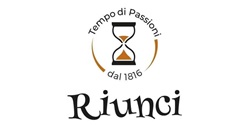From the Southern Hemisphere to Europe’s Vineyards, Extreme Weather Conditions Disrupt Wine Harvests, Setting Back 2023 Outputs
DIJON – In an unprecedented turn of events, the world’s vineyards are experiencing a dramatic downturn in wine production, as revealed in a web conference by Giorgio Delgrosso, the Head of the Statistical Department and Digital Transformation at the International Organisation of Vine and Wine (OIV), from their headquarters in Dijon on November 7th.
The preliminary figures for 2023 point to a bleak scenario, particularly within the European Union. Italy and Spain, two of the traditional titans in winemaking, have reported a sharp decline compared to their 2022 yields, primarily due to harsh weather phenomena including downy mildew and severe droughts. In a twist of fate, France has emerged as the world’s top producer this year, slightly surpassing its five-year average production volume.
Across the Atlantic, the United States paints a more optimistic picture, with forecasts suggesting not only an increase over 2022’s production but also a figure surpassing recent year averages.
The outlook is less favorable for the Southern Hemisphere, where key players like Australia, Argentina, Chile, South Africa, and Brazil have all faced the wrath of adverse climatic conditions, leading to a substantial drop in production. New Zealand stands as the lone exception, boasting a harvest that exceeds its five-year average.
A survey encompassing twenty-nine countries, which collectively make up 94% of the global production in 2022, estimates that world wine production (excluding juices and musts) for 2023 will hover between 241.7 million hectolitres (mhl) and 246.6 mhl, with a median estimate of 244.1 mhl. This forecasted output marks a disheartening 7% decline from the already below-average volumes of the previous year.
Analysts urge caution with these figures, as data from significant producers like China remains undisclosed. Moreover, the recent erratic nature of wine production, influenced by varying climatic shifts at both the country and regional levels, complicates the accuracy of predictions.
Should these preliminary estimates hold true, 2023 could see the lowest wine production since the record-setting year of 1961, which saw only 214 mhl. This downturn even surpasses the notably low output of 2017, which was 248 mhl. Countries from both hemispheres have suffered, with the Southern Hemisphere witnessing a 10-30% decrease, and Italy, Spain, and Greece grappling with unfavorable conditions in the Northern Hemisphere. On the brighter side, the USA and some EU countries, including Germany, Portugal, and Romania, have experienced beneficial climates conducive to average or above-average harvests.
The culprits for this downturn are the extreme and erratic climatic conditions, ranging from early frosts to excessive rainfall and prolonged droughts, leaving a significant mark on global vineyard yields. However, in an era of diminishing global consumption and high stock levels in various regions, this anticipated low production could potentially restore balance to the world wine market, offsetting the surplus and realigning supply with demand.










